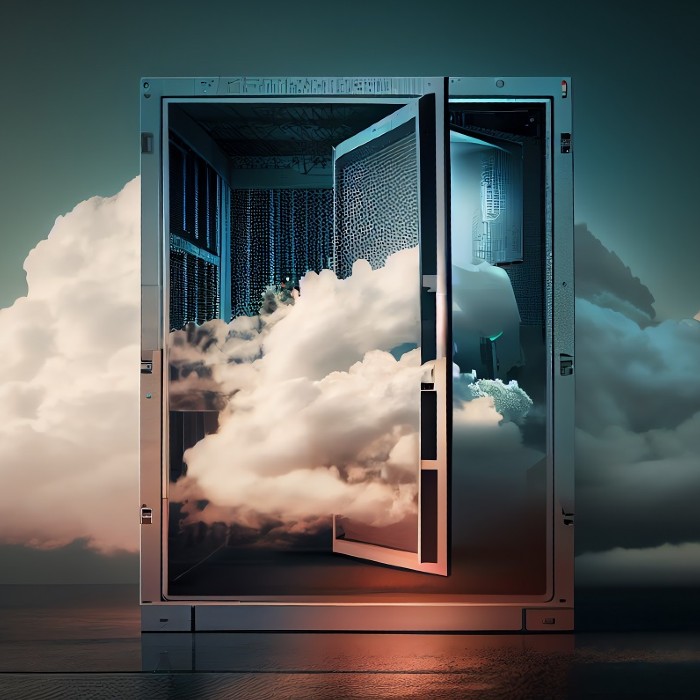The name “data center” is befitting. At least, it used to be. After all, the traditional data center was a collection of several — or several hundred — servers located in a single, central on-premises place. Thanks to evolving technology, however, data centers are losing their “center” of gravity. Even if they can’t change the name, companies are rethinking the how they use data centers in a more distributed way.
Fueling the appetite for data center modernization is the need for agile growth, flexible and secure operations, and experimentation. All three have pushed data centers to hybrid multicloud IT operations that connect to public cloud services like AWS, Azure and Google Cloud, scaling up and down as needed or running in smaller forms at the edge in environments like manufacturing plants and branch offices.
Data center modernization benefits are ample. And yet, IT modernization is not a one-size-fits-all endeavor. Understanding what a modern data center is and what they can deliver is important before moving fast into the future.
Data Centers Components Dispurse
By 2027, 35% of data center infrastructure will be managed from a cloud-based control plane, and 60% of data center infrastructure teams will gain relevant automation and cloud skills, according to Gartner.
The analyst firm recommends building cloud-native infrastructure within data centers, taking advantage of as-a-service models and migrating workloads either to the edge or to co-location facilities.
We’ll likely see more regular usage of AI in data center components like security. Tools can analyze terabytes of video footage and motion sensor data, detecting potentially malicious behavior.
AI tools can also analyze energy management to predict possible challenges — like a record-setting hot summer — and recommend more sustainable adjustments.
These changes are extending from the enterprise into communities. Ubiquity, a private infrastructure investment firm, launched an edge data center in Santa Rita Ranch, a master-planned community in Liberty Hill, Texas. A network operations center monitors the deployment, which serves as the landing point for local storage and compute requests.
“We see this deployment as highly complementary to what businesses and applications use today in traditional data centers,” said Greg Dial, managing director and CRO at Ubiquity.
“We are close to the user and support a more direct approach with housing data that can remain local.”
Ubiquity’s edge data center connects to a larger transport network that brings data into major data centers in Dallas, Austin and Houston. This last-mile digital infrastructure approach allows Ubiquity to terminate traffic at the edge of the network and improve overall performance, particularly with regard to data transmission latency.
“Our goal is to enhance performance and reduce costs for those that need a hyper-local solution,” Dial said.
Modern Data Center Benefits
Agile data centers offer improved scalability and efficiency. Promises like increased load availability and zero downtime provide a better end-user experience while creating more room for innovation. Teams can work from remote workstations and easily collaborate, quickly spinning up applications when needed.
For example, a national retail brand can tweak an application on the cloud and scale to match demand during peak shopping times, like Black Friday. Compliance concerns — like those around the European Union’s General Data Protection Regulation (GDPR) — are easier to address, too. Information passes through regional zones and routes appropriately.
“A big part of what the cloud provides you is that flexibility and agility,” said Steve Ma, chief architect at Walgreens Boots Alliance.
“If you’re doing a proof of concept, you can just terminate that project and turn off the machines, and you’re done.”
Harmail Singh Chatha, senior director of global cloud operations at Nutanix, believes data center will be software-defined.
“That’s the mindset that everybody has to go into in this industry,” he told The Forecast in a March 2022 interview.
Chatha and his team custom-designed a “hyper-dense” data center that combines tightly integrated hardware with Nutanix’s hyperconverged infrastructure (HCI) software, marrying compute, networking, and storage.
Over the course of two years, his team grew the data center by the equivalent of 2 megawatts of energy consumption, over 5,000 square feet of space, 200 cabinets, 4,600 servers, and 400 switches, all requiring more than 66,000 various types of cable connections.
Running HCI helps improve efficiency for the hyper-dense data center. Digital software management is a much easier lift than manual hardware configuration.
“Data center operators have to maximize efficiency on every inch of data center space,” Chatha said.
Building the Modern Data Center
Before implementing a modern data center design, Ma encourages businesses to look at their “why.”
“The first thing to ask is, ‘What outcomes do we want?’” Ma said. “Understand the value the business hopes to achieve from modernization and be very specific about it.”
Leadership must keep businesses on course. Data center modernization can’t succeed without buy-in and alignment. Modernization costs aren’t trivial; executives must be clear about their goals and diligent in monitoring spend.
“At some point, the CIO might say, ‘These cloud costs are adding up and getting expensive. Let’s go on-prem,’” Ma continued. “That certainty — that leadership — must be really solid and have conviction.”
The hybrid multicloud approach will remain a focal point, but elements like edge computing and AI will serve as critical pieces. For example, Ernst and Young’s Gordon Bell and Lillie Karch explored how AI plugins can support third-party services like online ordering and reservation applications. This “could potentially reshape existing data center ecosystems around specific industries or data sources,” they predicted.
“[Edge computing is] not going to ever overtake cloud data centers, because there are lots of things that you can’t do in an edge data center,” added Dr. Douglas Comer, author of The Cloud Computing Book.
“But it is going to be a supplement because you can do things in an edge data center that you can’t do in the cloud.”
Whatever approach an organization takes to implementing modern data center infrastructure, it must ensure team members are effective, Ma noted. He sees people manage applications but often don’t understand all the different functions and services cloud providers offer.
“It’s kind of like taxes. If you’re great about filing your taxes, you can get a lot of advantages,” he said. “If you don’t know about it, you’ll probably pay more than you need to.”
Editor’s note: Learn how Nutanix software unites public cloud simplicity and agility with private cloud performance and security. Whether on-premises or hybrid, it helps ensure cost-effective business continuity through unified management, one-click operations, and AI-driven automation.
Joey Held is a writer and podcaster based in Austin, Texas, and the founder of Fun Fact Friyay and Good People, Cool Things. Connect with him on X or LinkedIn.
© 2023 Nutanix, Inc. All rights reserved. For additional legal information, please go here.





